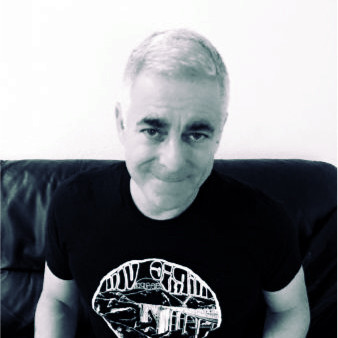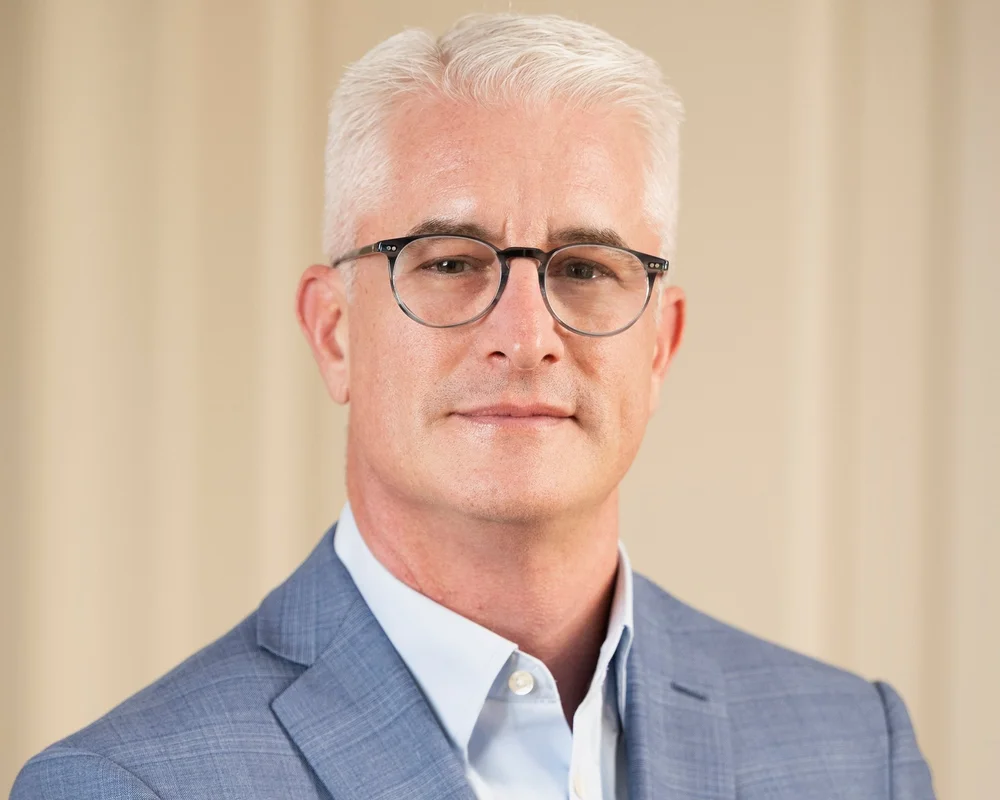 In the current infrastructure markets, there is a gap between the appetite and the capabilities of enterprise customers. Into that gap we have seen the rise of a new breed of provider that specializes in solving the problems of the enterprise using all the resources and expertise they can round up. One such company is AQUABLUE, and with us today to share perspective is CEO Chris Marino. Chris started out way back to the origins of MCI, went through the belly of the beast at WorldCom, experienced the highs and lows at Global Crossing, and helped build the metro footprint of Con Ed Communications. He then went on to co- found Wall Street Networks, and after that company became part of GTT he assembled the team he leads today.
In the current infrastructure markets, there is a gap between the appetite and the capabilities of enterprise customers. Into that gap we have seen the rise of a new breed of provider that specializes in solving the problems of the enterprise using all the resources and expertise they can round up. One such company is AQUABLUE, and with us today to share perspective is CEO Chris Marino. Chris started out way back to the origins of MCI, went through the belly of the beast at WorldCom, experienced the highs and lows at Global Crossing, and helped build the metro footprint of Con Ed Communications. He then went on to co- found Wall Street Networks, and after that company became part of GTT he assembled the team he leads today.
TR: What led you to AQUABLUE? What opportunity did you see in the internet infrastructure marketplace?
CM: What I love about AQUABLUE, and one of the reasons I wanted to invest and bring the company to where it is today is that we are a very “white glove service” type of company. What I saw in the market was a hole between the carriers not providing the proper service and support and customers with limited resources. We wanted to build a design and engineering firm offers one-stop-shopping, looking for the best solution to deliver with multiple carriers underneath us where there is one person to provide the SLA, the MSA, the design delivery, and then the day 2 support. I think of us as a SWAT-like organization that delivers high end solutions. We can do anything anywhere and it’s all packaged up from one company. We are here to help customers and companies: do the research, flush out what’s real and what’s not, and educate them on it. The beauty of our model that we have is we’re not tied to our own network. I decided long ago that we wouldn’t put money into our own infrastructure and waste time building. What we’re doing is trying to find the best solution, not favor a higher profit route that we happen to own. We put our customer on the best route, and we stay fast and flexible.
TR: What enterprise verticals do you focus on?
CM: The way we talk about it here is that you start with your friends and family. Most of the people I put together started with the financial community and combined we had hundreds of years of experience there. So in 2017 we started with the financial community. By 2018 we started to bring more enterprises in, and now we have a really good mix. A lot of those industries have very similar needs to the financial community. Where financial markets have the SEC, SOX, and FINRA, healthcare has HIPAA. And media and content has been growing so fast that their need for data has surpassed everybody.
TR: In which verticals do you see the most growth in today’s market?
CM: The health care industry has been a tremendous market for us. We’re currently building out one of the largest new networks for one of the big health and hospital systems in New York City for cancer, not only for their core, but for their clinical sites and data centers. Second to that probably is the media and distribution companies, which are exploding all over the world because of the need for telecommunications supporting remote work, remote school. We’re doing an awful lot of support for that globally, not just in the US.
TR: Are there particular geographies you are seeing the most opportunity in?
CM: Over the last three years we’ve done very well in the US market, but with the way the world’s been the last two years, we are very much globally focused now. We’re doing work in Asia and in the Middle East, and the international markets are probably our fastest-growing right now. We are also seeing demand specific to smaller and remote locations driven by work from home. For example, we just did a very cool installation in New York City in a brownstone. There had never been any telecommunications services before, but for the head of a firm, it was worth it to do something very targeted because being on a call and losing your connectivity is not good when you’re working on a million- or billion-dollar merger.
TR: In what ways has the pandemic shifted your customers’ needs?
CM: Financial firms have done a super job of building big, diverse networks for their core sites: a big office tower, some data centers, and a few large outside offices. Once they dispersed everybody the bandwidth to what I’d call the exit ramps was limited. There’s an awful lot of infrastructure needs to be upgraded around the country and world to improve those exist ramps from their core sites. We actually are growing at a very good pace this year, over 40% so far. There were some areas where some of our big clients who were expanding then stopped. But that was surpassed by the need for access and service because of the pandemic and the need to work from home, remote work. Before the pandemic, how many people really knew Zoom and Microsoft Teams? Even those that did didn’t use them very much, but the demand for data and for bandwidth to support that has been just blown up. Our business has expanded in areas where we didn’t have it before, surpassing all expectations. I do believe that it will continue, but not at the current pace. I think remote work is here to stay, although we are seeing companies starting to go back to full-time to their offices. But I also don’t think that that’s COVID-specific because I think people are thinking broader now. Commuting an hour or two each day is not productive, so there’s a trade-off. I don’t know where it lies but I think there’s got to be a medium somewhere, where you allow remote work, and the result is very productive.
TR: What new technologies do you see as future solutions you can offer the enterprise market?
CM: People are working diligently on an awful lot of technologies. In the financial community they’re trying to expand services over RF instead of going over fiber, even using older analog technologies to try and back things up. Whether for data centers, remote office locations, or backup trading sites, enterprises are trying to be more flexible and are looking at new technologies to help. They are looking very forward right now, and I think that deciding what to chase is part of the challenge right now. But my thought is that what the country needs right now is still more fiber. Take 5G, for example. If 5G networks went fully live today across the country, you’d still need data collection points on all those devices coming off the poles. As much as we’re going to be a wireless society, you still need hard fiber back to collection points and data centers. Only when you have built infrastructure that’s both sound and common can be utilized to deliver all the things that people want.
TR: What’s the biggest challenge you see in the market right now?
CM: What I see as a challenge right now is the supply chain. If you’re starting a new business and you need a network in 90 days. You may not be able to get the fiber, and your Ciena or Cisco or Arista or whatever equipment could take 90 to 120-plus days. We have to ramp up our manufacturing and get the supply chain fixed. The problems are deep and it’s not just one company that is affected. It’s not even one industry, the furniture business is having trouble getting raw materials from Styrofoam to bamboo. Before developing new technologies, we have to stop, build what we have, get it correct, and then go forward. People have to be creative and everyone’s trying. We’re testing out gear with some new providers that have some inventory and some stock, because these challenges are not going away this year, though hoping next year we’ll be in good shape.
TR: How do you view M&A as a path to growth in this industry?
CM: I’ve been very involved with acquisitions in the past, helping to build and grow and then sell two different companies. I went through one where it was successful, and one where I wasn’t happy the way it turned out even though I loved the company and thought the executive team was good, but I’ve now decided that I don’t want to be part of a roll-up strategy. I think it can work, but I think it’s easy to get caught up in the roll-up strategy and then you’re forced to continue to roll-up. What I want to do is build a great company from the ground up and build it organically. I know that’s not popular in these days. There is a lot of cash on the sidelines, and everybody wants instant success and instant growth. You can do it inorganically and still build a good company, but I want to build a great company and I want to build it the right way. I won’t say that if there’s a good asset out there, I would be afraid to look at it, but it would have to fit really well and not ever sacrifice our commitment to service and support.
TR: Where do you think the internet infrastructure industry should be investing its resources?
CM: I see is a lot of companies, some big and some not, spending all their money on marketing and building from the sales end up. One of the reasons I got into this was I felt like the big guys weren’t doing it right. What I think that the industry needs is more investment in infrastructure, more investment in support, and more investment in people. We need to be less worried about the old standards of corporate revenue dollars as a percentage to employee, because I don’t think telecommunications as a whole has done a great job supporting customers. We’ve grown the company based on providing great service and support and just earning the business by word of mouth. We still have no direct salespeople, it is all our existing customers growing because we wrap service and support around them, and their referrals. My company needs some good carriers out there that can be responsive and provide good service because we rely on that. I have a ton of business available to carriers that can provide great service and support. Every month we compare and see who’s the top producing carrier in terms of delivery dates, reliability, and uptime, and we make changes on a monthly basis to route business to the ones that are performing. With all the crazy mergers and acquisitions there have been some difficulties. When I call a carrier and I’m waiting two weeks for a price quote, there’s a problem. One thing that is interesting is that some of what were once the biggest and slowest have become better providers for us. Their processes used to be big and cumbersome, so I just can’t speed them up. Verizon may not be fast movers, but if I need them for a service, I can pretty much plan for it, and it will happen. Lately it’s the somewhat smaller, growing ones are the ones with more challenges.
TR: Thank you for talking with Telecom Ramblings!
If you haven't already, please take our Reader Survey! Just 3 questions to help us better understand who is reading Telecom Ramblings so we can serve you better!
Categories: Interconnection · Internet Backbones · Managed Services






Discuss this Post